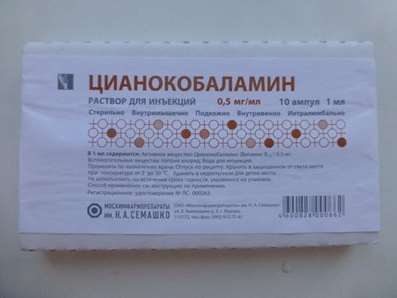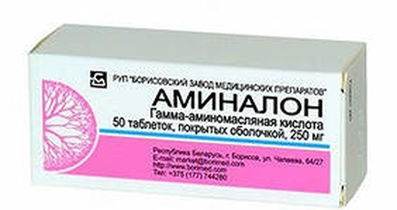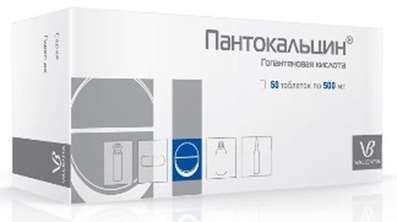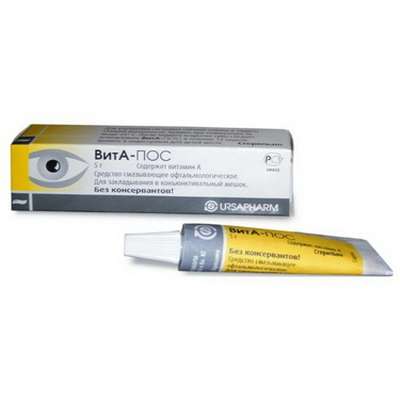Instruction for use: Agapurin
I want this, give me price
Dosage form: Pills, Concentrate for solution for intravenous and intra-arterial administration, solution for injection, Coated tablets
Active substance: Pentoxyphyllinum
ATX
C04AD03 Pentoxifylline
Pharmacological group
Antiaggregants
Antihypoxants and antioxidants
Angioprotectors and microcirculatory correctors
The nosological classification (ICD-10)
H31.9 Vascular system diseases, unspecified: Angiospasm of the choroid; Angiospastic changes in the choroid; Atherosclerotic changes in the retina and choroid; Diseases of the choroid; Change in the mesh and choroid of the eye; Circulatory disturbances in the choroid of the eye; Disturbances of blood supply to the choroid of the eye; Vascular changes in the choroid of the eye; Thrombosis of the arteries of the choroid
H34 Vascular occlusion of retina: Arterial thrombosis of the vessels of the eye; Venous thrombosis of the vessels of the eye; Violation of retinal circulation; Disturbances of intraocular circulation; Insufficient blood supply to the mesh and choroid; Occlusion of central retinal vessels; Acute obstruction of retinal arteries; Subacute and chronic circulatory insufficiency in the retina or in the choroid of the eye; Vascular diseases of the retina; Vascular disorders in the retina of the eye; Vascular thrombosis of the retina; Central retinal vein thrombosis; Thrombosis of the central vein of the retina and its branches; Thrombosis of the central vein of the retina of the eye and its branches
H35.9 Retinal disease, unspecified: Retina dystrophy; Vascular pathology of the retina; Angiospastic changes in the retina and choroid; Dystrophic retinal disease; Dystrophic retinal lesion; Dystrophic lesion of the retina of the eye; Change in the mesh and choroid of the eye; Cystoid macular edema after surgical removal of cataracts; Circulatory disturbances in the retina of the eye; Disorders of blood supply to the retina; Disorders of blood supply to the retina; Vascular diseases of the retina; Vascular disorders in the retina of the eye; Vascular spasm of the retina; Retina angiospasm
H91 Other hearing loss: Age-related vascular hearing loss; Age-related vascular drop in hearing; Age-related hearing impairment; Idiopathic hearing loss; Decreased acuity of hearing; Hearing loss; Deteriorating hearing of vascular or toxic origin; Perceptual hearing loss
I67.2 Cerebral atherosclerosis: Atherosclerosis of the arteries of the brain; Atherosclerosis of cerebral vessels; Atherosclerotic changes in cerebral vessels; Vascular diseases of the brain; Sclerotic ischemic attacks; Sclerosis of cerebral vessels
I67.9 Cerebrovascular disease, unspecified: lacunarity status; Angioneyropatiya; Arterial angiopathy; brain hypoxia; Encephalopathy; cerebral vascular disease and age-related; Coma in violation of cerebral circulation; Metabolic and cerebrovascular disorders; Violation of the blood supply to the brain; Cerebrovascular accidents; Violation of brain functions; Violation of the functions of the cerebral cortex; Violation of cerebral circulation; Cerebrovascular insufficiency; Acute cerebrovascular insufficiency; Acute ischemic attack; The defeat of the brain vessels; The progression of destructive changes in the brain; Disorders of cerebral circulation; The syndrome of cerebral insufficiency; Cerebral vascular insufficiency; Vascular encephalopathy; Vascular diseases of the brain; Vascular brain disorders; Vascular lesions of the brain; Functional brain disorders; Chronic cerebral ischemia; Chronic heart failure; Chronic cerebrovascular insufficiency; Chronic cerebrovascular insufficiency; Chronic violation of the blood supply to the brain; Cerebral insufficiency; Cerebral organic failure; encephalasthenia; cerebroasthenic syndrome; Cerebrovascular disease; Cerebrovascular pathology; cerebrovascular disease; cerebrovascular disorders; cerebrovascular disorders; Encephalopathy discirculatory
I69 The effects of cerebrovascular disease: Ischemic and post-stroke condition; Residual effects of hemorrhagic stroke; Residual effects of ischemic stroke; Residual effects of cerebral circulation; Residual effects of subarachnoid hemorrhage; Ischemic stroke; Transferred thromboembolic stroke; The consequence of cerebrovascular accident; The consequence of insufficient blood supply to the brain; Consequences of ischemic stroke; The consequences of a stroke; Postapopleksicheskoe state; post-stroke period; post-stroke syndrome; Condition after stroke; Condition after cerebrovascular accidents; Chronic cerebrovascular insufficiency
I70.2 Atherosclerosis of arteries: arteriosclerosis obliterans; Arteriosclerosis peripheral arteries; Atherosclerosis of the arteries of the lower extremities; Atherosclerosis of peripheral arteries; Atherosclerosis limbs; Occlusive disease of the lower extremities; arteriosclerosis obliterans; Arteriosclerosis obliterans of lower limb arteries; Atherosclerosis obliterans of the upper limbs; Arteriosclerosis obliterans of lower extremities; Atherosclerosis of arteries; limb arteriopathy; Arteriosclerosis obliterans limbs; arteriosclerosis obliterans
I73.0 Raynaud's Syndrome: Raynaud's syndrome Leriche; Raynaud's disease; Raynaud's phenomenon; RaynaudLeriche syndrome; Raynaud's disease; Raynaud's syndrome with trophic disorders; Peripheral angiopathy
I73.1 thromboangiitis obliterans [Buerger's disease]: Berger's disease; thromboangiitis obliterans; trombangiit; thromboangiitis obliterans; Buerger's disease
I73.8 Other specified peripheral vascular disease: Syndrome of intermittent claudication; endarteritis obliterans; acrocyanosis; vasoconstriction; occlusive disease; Intermittent claudication; Disorders of vascular innervation; Spasm of peripheral arteries; Arterial angiopathy; Venous insufficiency and its complications; Spasm of peripheral vessels; The spasm of coronary vessels; endarteritis; cooling stop; Occlusal disorders of peripheral circulation; Peripheral vascular occlusion
I73.9 Peripheral vascular disease, unspecified: angiospasm; Vasospasm / vasoconstriction; vasospastic disorders; Violation of venous microcirculation; Violation of circulation; Violation of peripheral blood circulation; Lack of peripheral blood circulation in the lower and upper limbs; Peripheral arterial occlusive disease; Peripheral arterial occlusive disease in stages III-IV on Fontaine; Peripheral vascular insufficiency; Peripheral vascular lesions; Peripheral vascular disorders; Peripheral circulatory disorder; spasm of artery; angiospasm; Functional peripheral arterial disease; Chronic occlusive disease; Chronic obliterating diseases of the lower limbs; Chronic arterial occlusive disease
I79.2 Peripheral angiopathy in diseases classified elsewhere: diabetic angiopathy; Angiopathy in diabetes; arteriosclerosis diabetic; Pain in lesions of peripheral nerves; Diabetic angiopathy; Diabetic microangiopathy; Diabetic vascular disease; Intermittent angioneurotic disbaziya; Macroangiopathy in diabetes; microangiopathy; Microangiopathy in diabetes mellitus; Tingling sensations in the hands and feet; Coldness in the extremities; Peripheral angiopathy; Peripheral arterial disease; Sclerosis Menkeberga; Chronic obliterating diseases of arteries
I99 Other and unspecified disorders of the circulatory system: angiopathy; Arterial angiopathy; Atherosclerotic angiopathy; Hemodynamic right heart defects; Hemodynamic defect of the right heart; coronary angiopathy; Infringement of blood circulation; Violation of circulation; Violation microcirculation in organs and tissues; Peripheral circulatory disorders; Disorders of the peripheral circulation in the extremities; circulatory failure; Hemodynamic instability occlusion of arteriovenous origin; Acute circulatory failure; Psevdostenokardicheskie state; Psevdostenokardicheskoe disorder; circulatory disorder; Cardiovascular diseases; Vascular insufficiency; Thrombosis arteriovenous shunt; Thrombosis with prosthetic heart valves; Deterioration of blood circulation in the pelvic organs; Functional failure of the cardiovascular system; Functional disorders of the cardiovascular system; Chronic arterial insufficiency; Chronic heart failure; Age-related vascular disease; The risk of thrombosis
L98.4.2 * Trophic skin ulcer: Varicose ulcer; Varicose ulcers; Cutaneous ulcer; Non-healing ulcers; Trophic ulcer; Trophic ulcer of lower leg; Trophic skin lesions; Trophic after-burn ulcers; Trophic ulcers; Trophic skin ulcers; Ulcer of lower leg; Ulcer of skin; Ulcer of trophic skin; Ulcer on legs; Ulcerative necrosis of the skin; Ulcer of shin; Ulcer of the lower leg; Ulcers of lower extremities; Difficult healing ulcers
R02 Gangrene, not elsewhere classified: Atherosclerotic gangrene; Gangrene; Gangrene of the extremities; The fire of Saint Anthony
R20.2 Paresthesia of the skin: Paroxysmal paresthesia; Paresthesia
T33-T35 Frostbite
Composition and release form
Pentoxifylline - 20 mg
Excipients: sodium chloride, water for injection
In ampoules of 5 ml; In a pack of cardboard 5 ampoules.
Description of dosage form
Hyaloid colorless solution.
Characteristic
Spasmolytic agent from the group of purines.
Pharmacology
Mode of action - Vasodilator, antiaggregational, improving microcirculation.
Pharmacodynamics
Improves microcirculation and rheological properties of blood. The mechanism of action is associated with the inhibition of phosphodiesterase and an increase in cAMP content in platelets and ATP in erythrocytes, while saturating the energy potential, which in turn leads to vasodilation, a decrease in OPSS, an increase in the shock and minute blood volume without significant changes in heart rate.
Expanding the coronary arteries, increases the delivery of oxygen to the myocardium (antianginal effect), helps improve oxygenation of the blood.
Increases the tone of the respiratory musculature (intercostal muscles and diaphragm).
With intravenous administration leads to an increase in collateral circulation, an increase in the volume of flowing blood through a unit of section. It leads to an increase in the content of ATP in the brain, favorably affects the bioelectric activity of the central nervous system.
Reduces the viscosity of the blood, increases the elasticity of the erythrocyte membrane (due to the effect on the pathologically altered erythrocyte deformability). Improves microcirculation in areas of impaired blood circulation.
In occlusive lesions of peripheral arteries ("intermittent" lameness), leads to an elongation of the distance of walking, elimination of night cramps of gastrocnemius muscles and pain at rest.
Pharmacokinetics
The drug is rapidly metabolized in the liver. In the process of metabolism, several active metabolites are formed, the main ones being metabolite 1 and metabolite 5. Their concentrations in blood plasma are 5 and 8 times (respectively) higher than the concentration of the initial substance.
It is excreted in the form of metabolites (94%) and through the intestine (4%), in the first 4 hours up to 90% of the dose is excreted.
Unchanged, 2% of the drug is excreted. Pentoxifylline and its metabolites do not bind to blood plasma proteins.
With severe renal dysfunction, excretion of metabolites is slowed.
If the liver function is abnormal, T1 / 2 prolongation and increased bioavailability are noted.
Indications for Agapurin
Violation of peripheral blood circulation against atherosclerotic, diabetic and inflammatory processes (including intermittent claudication caused by atherosclerosis, diabetic angiopathy, obliterating endarteritis);
Trophic tissue disorders due to violation of arterial or venous microcirculation (varicose ulcers, gangrene, frostbites);
Angioneuropathy (paresthesia, acrocyanosis, Raynaud's disease);
Acute and chronic disorder of cerebral circulation of ischemic origin (including cerebral atherosclerosis);
Condition after hemorrhagic or ischemic stroke;
Violation of blood circulation in the vessels of the eye (acute and chronic circulatory insufficiency of the mesh and vascular membranes of the eye);
Disturbance of the function of the middle ear of vascular genesis, accompanied by deafness.
Contraindications for Agapurin
Increased sensitivity to pentoxifylline and substances from the group of xanthine derivatives;
Pronounced coronary or cerebral atherosclerosis;
Acute myocardial infarction;
Severe heart rhythm disturbances;
Uncontrolled arterial hypotension;
Porphyria;
Massive bleeding;
Hemorrhage into the retina of the eye;
Acute hemorrhagic stroke;
pregnancy;
Lactation period;
Age to 18 years (efficiency and safety not established).
With caution: patients with labile blood pressure, a tendency to arterial hypotension, chronic heart failure, a penchant for hemorrhages, a condition after recently undergone surgical interventions, liver and / or kidney failure.
Pregnancy and breast-feeding
Contraindicated in pregnancy. At the time of treatment should stop breastfeeding.
Side effects
From the side of the central nervous system: headache, dizziness, anxiety, sleep disturbances, convulsions.
From the cardiovascular system: tachycardia, arrhythmia, cardialgia, rarely - the progression of symptoms of angina pectoris, lowering blood pressure.
From the skin: hyperemia of the skin of the face, flushing of the blood to the face and upper chest, swelling, increased brittleness of the nails.
On the part of the digestive tract: nausea, vomiting, a feeling of heaviness in the stomach, a decrease in appetite, intestinal atony, exacerbation of cholecystitis, cholestatic hepatitis, bleeding from the mucous membranes of the stomach, intestines.
From the sense organs: a visual impairment, scotoma.
On the part of the hemostasis system and hemopoiesis: thrombocytopenia, leukopenia, pancytopenia, hypofibrinogenemia; Bleeding from the vessels of the skin.
Allergic reactions: rarely - itching, skin hyperemia, urticaria, angioedema, anaphylactic shock.
Laboratory indicators: an increase in the activity of hepatic transaminases - alanine-aminotransferase, asparagine aminotransferase, LDH and ALP (alkaline phosphatase).
Interation
Pentoxifylline may increase the effect of drugs that affect the blood coagulation system (indirect and direct anticoagulants, thrombolytics), antibiotics (including cephalosporins - cefamandol, cefoperazone, cefotetana), valproic acid.
Increases the effectiveness of antihypertensive drugs, insulin and oral hypoglycemic agents.Cimetidine increases the concentration of pentoxifylline in the plasma and the risk of side effects.
Co-administration with other xanthines can lead to excessive nervous stimulation.
Dosage and Administration
I.V., intraarterially, I.M.
When carrying out infusions the patient should be in the "lying" position.
I.V., drip for 1.5-3 hours.
100 mg (1 ampoule) to dissolve in 250-500 ml of 0.9% solution of sodium chloride or 5% solution of dextrose (glucose). With good tolerability, the dose can be increased by 100 mg per day. The maximum daily dose is 300 mg.
Intraarterially
Initially, 100 mg of the preparation should be dissolved in 20-50 ml of 0.9% sodium chloride solution, in the following days - 200-300 mg in 30-50 ml of the solvent. Enter with a speed of 100 mg (5 ml of 2% solution of the drug) for 10 minutes. With severe atherosclerosis, cerebral vessels cannot be injected into the carotid artery.
Patients with chronic renal failure (Cl creatinine - less than 10 ml / min) are administered 50-70% of the usual dose.
I.M. on 100 mg (1 ampoule) 1-2 times a day.
Overdose
Symptoms: weakness, dizziness, marked decrease in blood pressure, syncope, tachycardia, drowsiness, loss of consciousness, tonic-clonic convulsions, increased nervous excitability, hyperthermia, areflexia, signs of gastrointestinal bleeding (vomiting like "coffee grounds").
Treatment: symptomatic, aimed at maintaining the function of breathing and blood pressure.
Special instructions
Treatment should be carried out under the supervision of AD.
Patients with chronic heart failure should be compensated for blood circulation.
In patients with diabetes mellitus, who take hypoglycemic drugs, the administration of large doses can cause severe hypoglycemia (dose adjustment is required). At appointment simultaneously with anticoagulants it is necessary to watch carefully indicators of a coagulating system of a blood.
In patients who have undergone recent surgery, a systematic control of the concentration of hemoglobin and hematocrit is necessary.
The administered dose should be reduced in patients with low and unstable blood pressure.
Elderly people may need to reduce the dose (decrease in the rate of excretion).
Smoking can reduce the therapeutic effectiveness of the drug.
The compatibility of a solution of pentoxifylline with another infusion solution should be checked in each case.
Storage conditions of Agapurin
In a dry place, at a temperature of 10-25 ° C.
Keep out of the reach of children.
Shelf life
3 years
Do not use beyond the expiration date printed on the package.

 Cart
Cart





